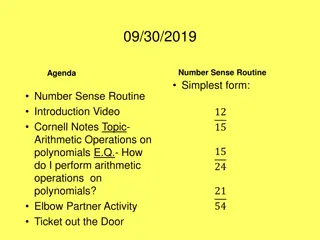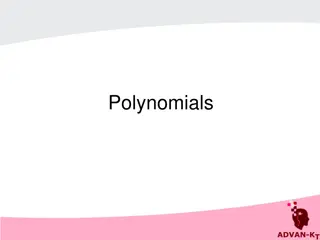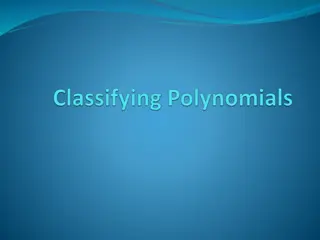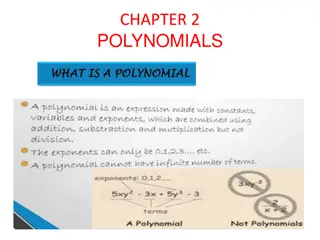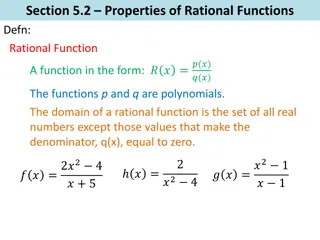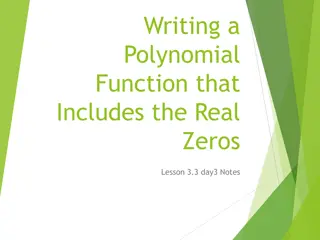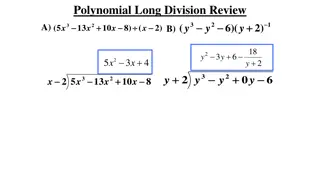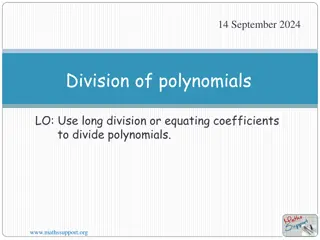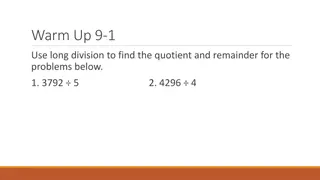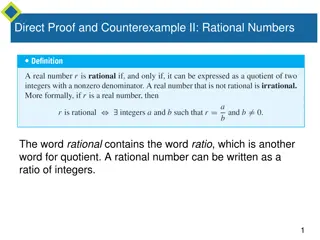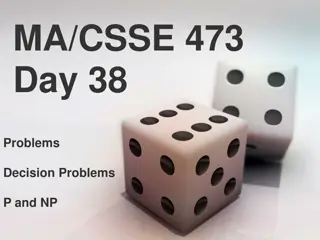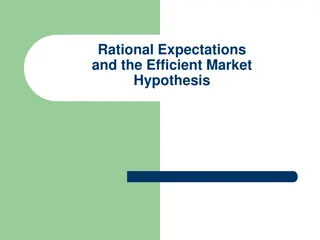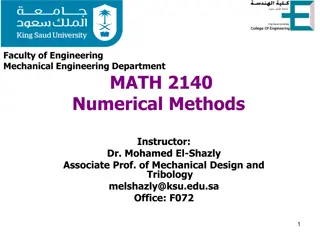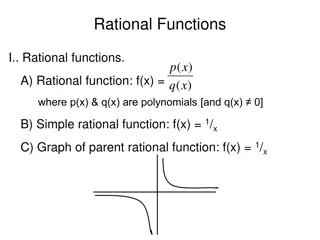Understanding Rational Functions Through Divided Differences and Newton Polynomial
Explore the mathematical approach of using divided differences and Newton Polynomial to determine an equation for a rational function passing through given points. The process involves creating a system of linear equations and utilizing Newton Polynomial to establish relationships between points. Various numerical examples and the staircase equation provide insight into the method's application and efficacy in scientific computing.
Download Presentation

Please find below an Image/Link to download the presentation.
The content on the website is provided AS IS for your information and personal use only. It may not be sold, licensed, or shared on other websites without obtaining consent from the author. Download presentation by click this link. If you encounter any issues during the download, it is possible that the publisher has removed the file from their server.
E N D
Presentation Transcript
Equation for a rational function, that passes through given points, based on divided differences Oleg Antoniuk oleg.anton@gmail.com
Conventional approach [N/M] leads to a system of linear equations for and [N/M] [N-1/M+1] or [N+1/M]
Overview Newton Polynomial: [N/0], P=N+1 [1/1], P=3 [L/L] or [(L+1)/L], P=2L+1 or P=2L+2 [N/M] for N M Numerical example for P=6: [5/0], [4/1], [3/2], [2/3], [1/4], [0/5] General case: number of points P N+M+1
[1/1] often given as
Staircase equation: [L/L] or [(L+1)/L] N=M or N=M+1 ??= ??,?+1 [1] Numerical Methods in Scientific Computing, Volume 1, / Germund Dahlquist, ke Bj rck, 2008, pages 391-392
Vs. Barycentric formula/Lagrange polynomial Lagrange polynomial eq. > Barycentric interpolation eq. [1] Numerical Methods in Scientific Computing, Volume 1, / Germund Dahlquist, ke Bj rck, 2008 [2] https://www.alglib.net/interpolation/rational.php [3] https://en.wikipedia.org/wiki/Lagrange_polynomial Newton polynomial eq. > Staircase eq.= = Polynomial + Continued Fraction + ?
Numerical example for P=N+M+1=6 In staircase equation for : N > M K=5 N=5, M=0 [5/0] K=3 N=4, M=1 [4/1] For N < M we will use such that K=1 N=3, M=2 [3/2]
Numerical example for P=N+M+1=6 N=5, M=0 [5/0] N=4, M=1 [4/1] N=3, M=2 [3/2]
Numerical example for P=N+M+1=6 N=2, M=3 [2/3] N=1, M=4 [1/4] N=0, M=5 [0/5]
Summary It is possible to integrate the Newton Polynomial equation with additional continued fraction part to model rational functions of the order [N/M], N M, that pass through P = N+M+1 points, not only polynomials, the case of [P-1/0]. To do this divided differences have to be redefined in a piecewise way depending on their order. The general case of the staircase-like equation may be worth investigating: when P N+M+1 is allowed.



